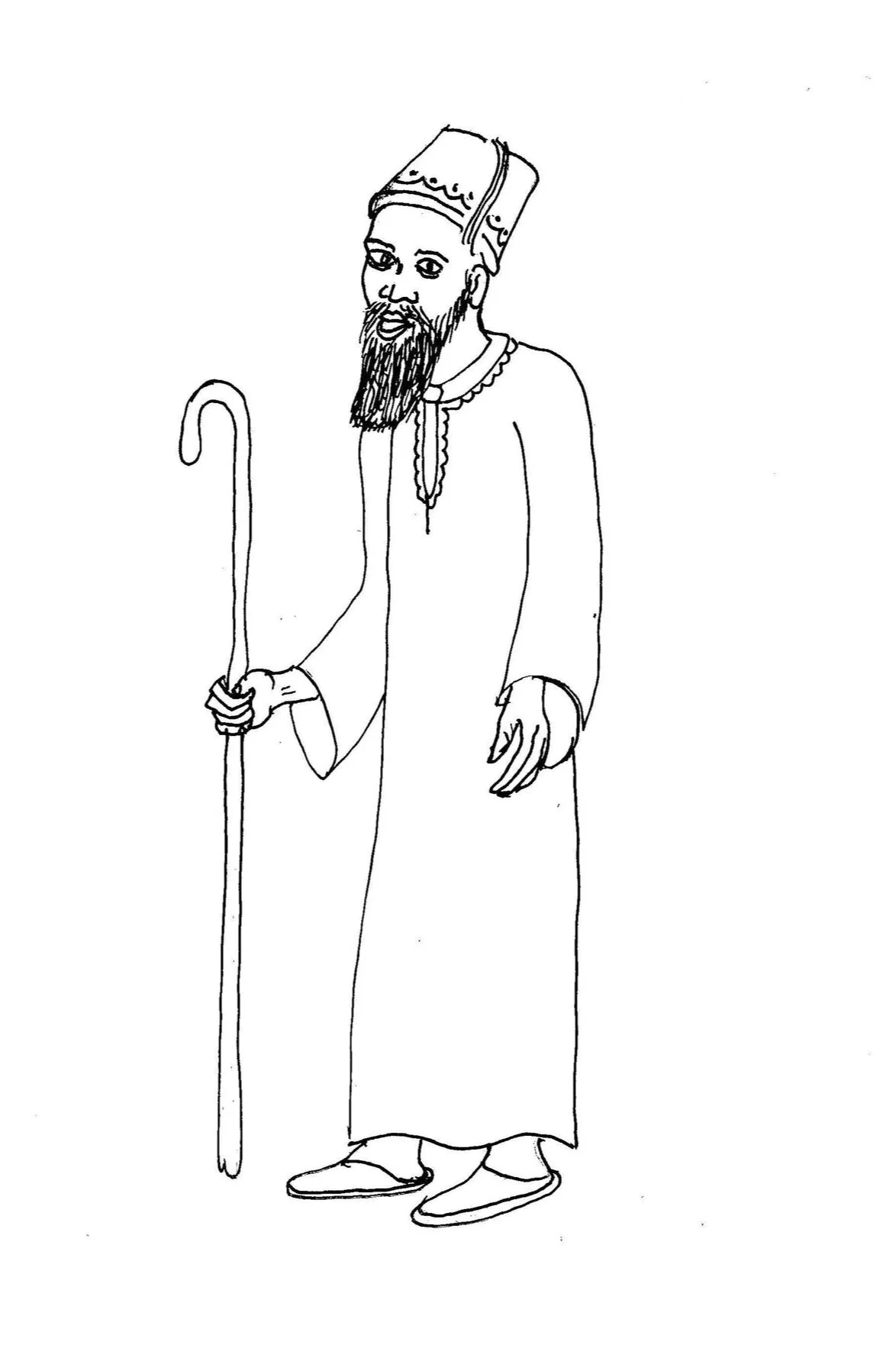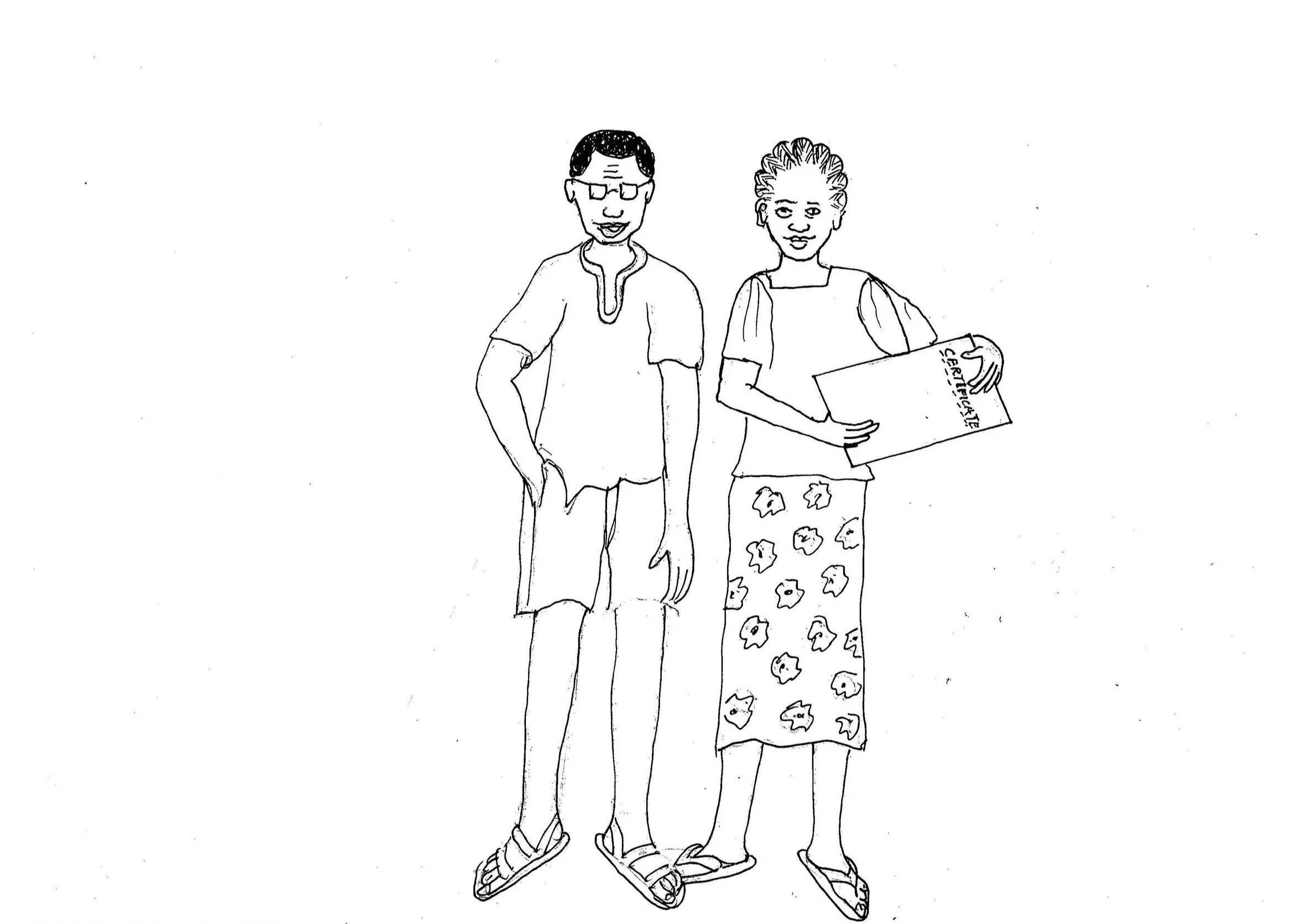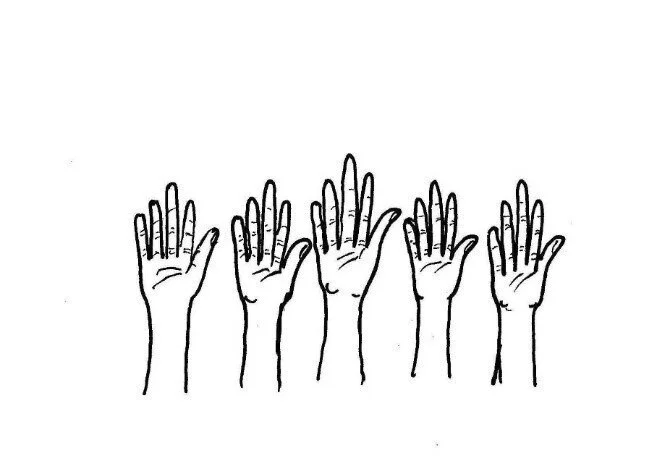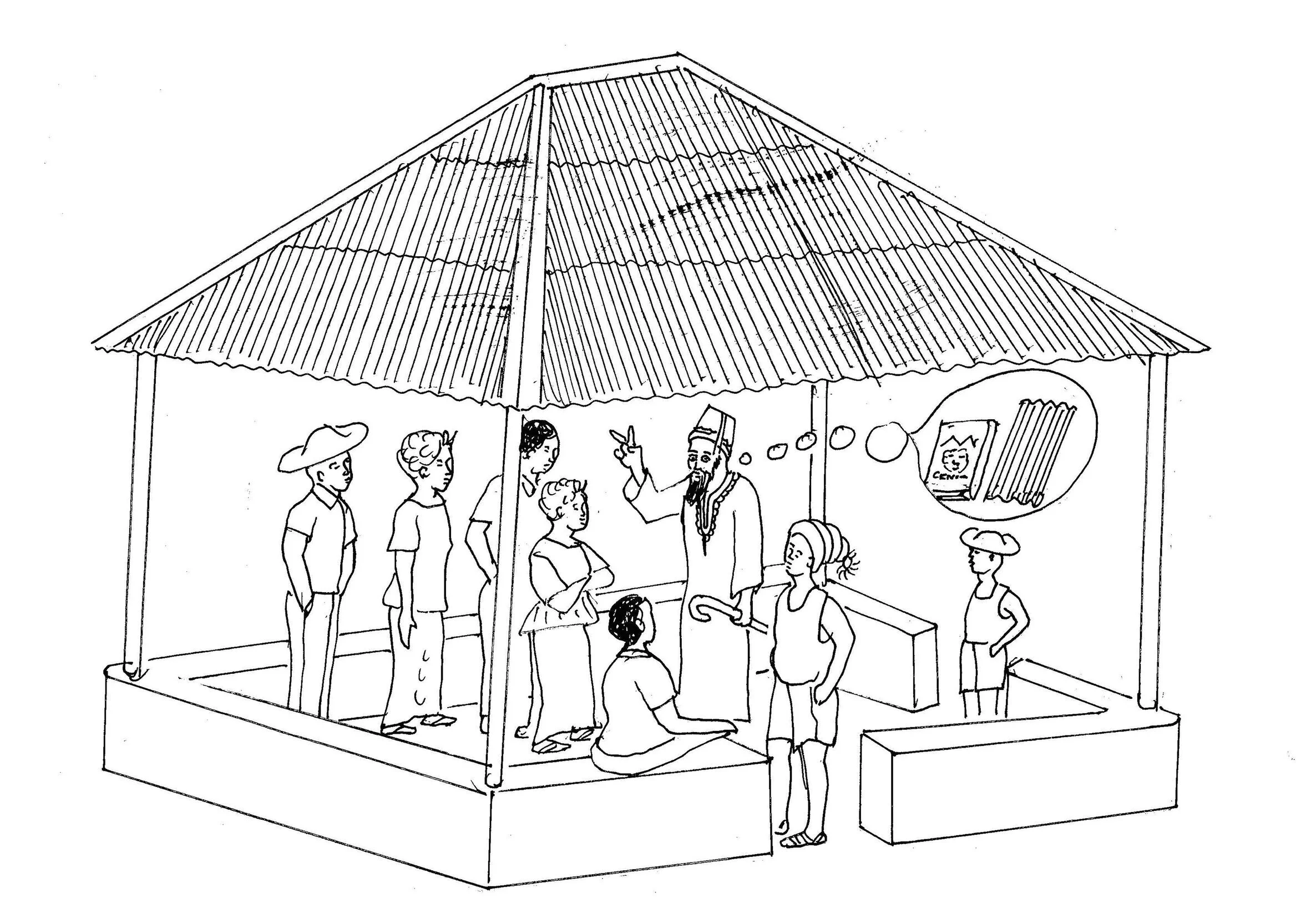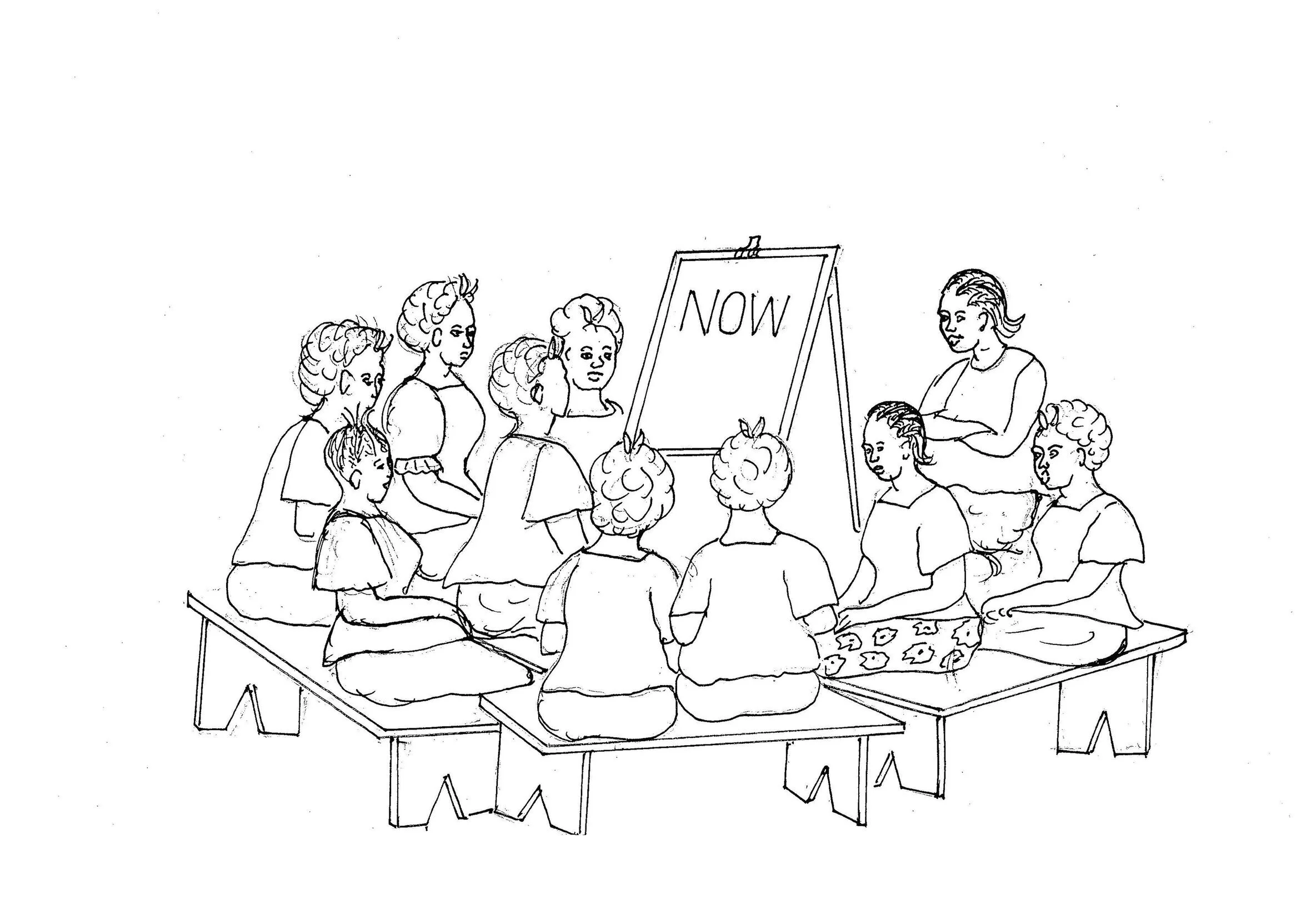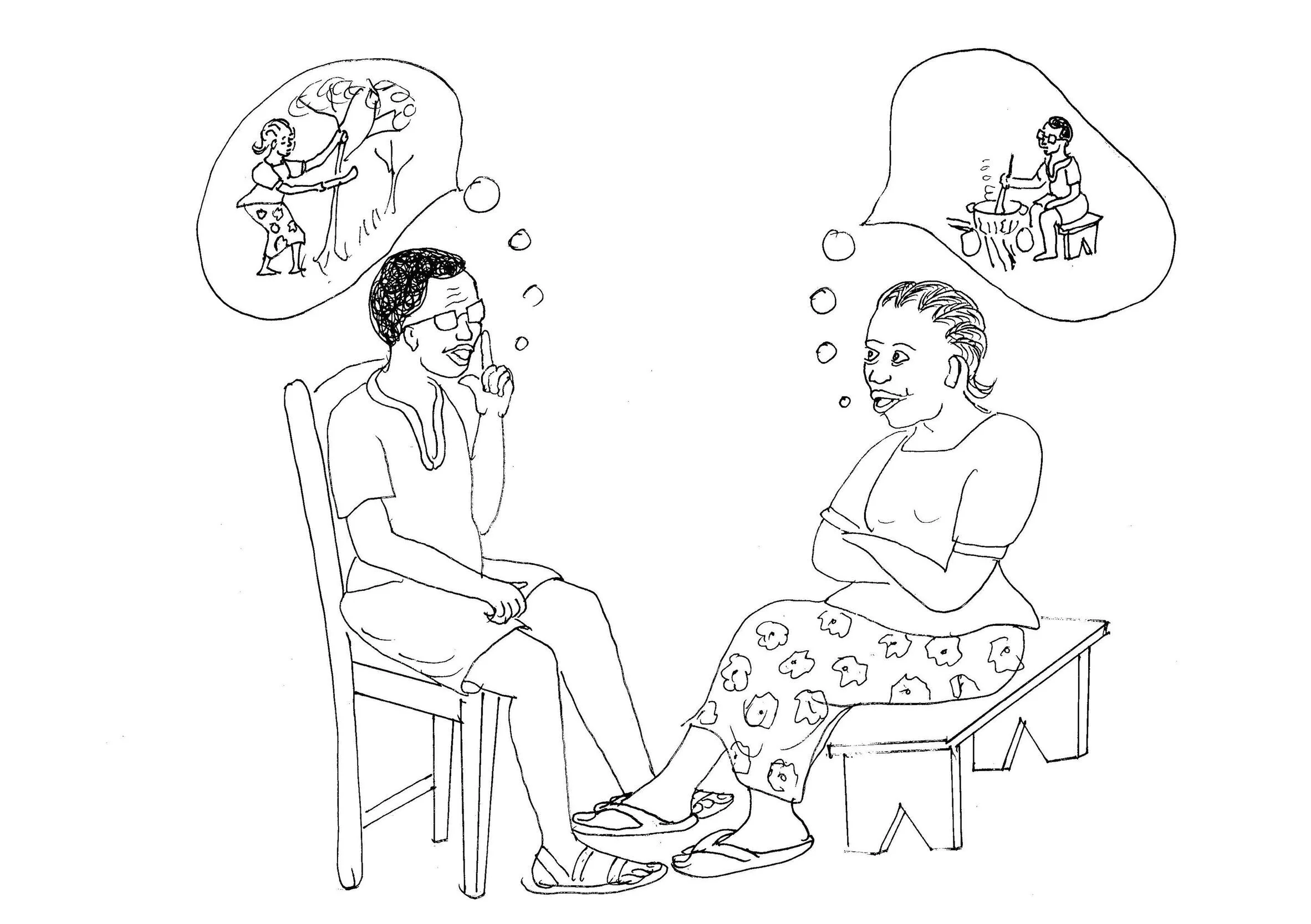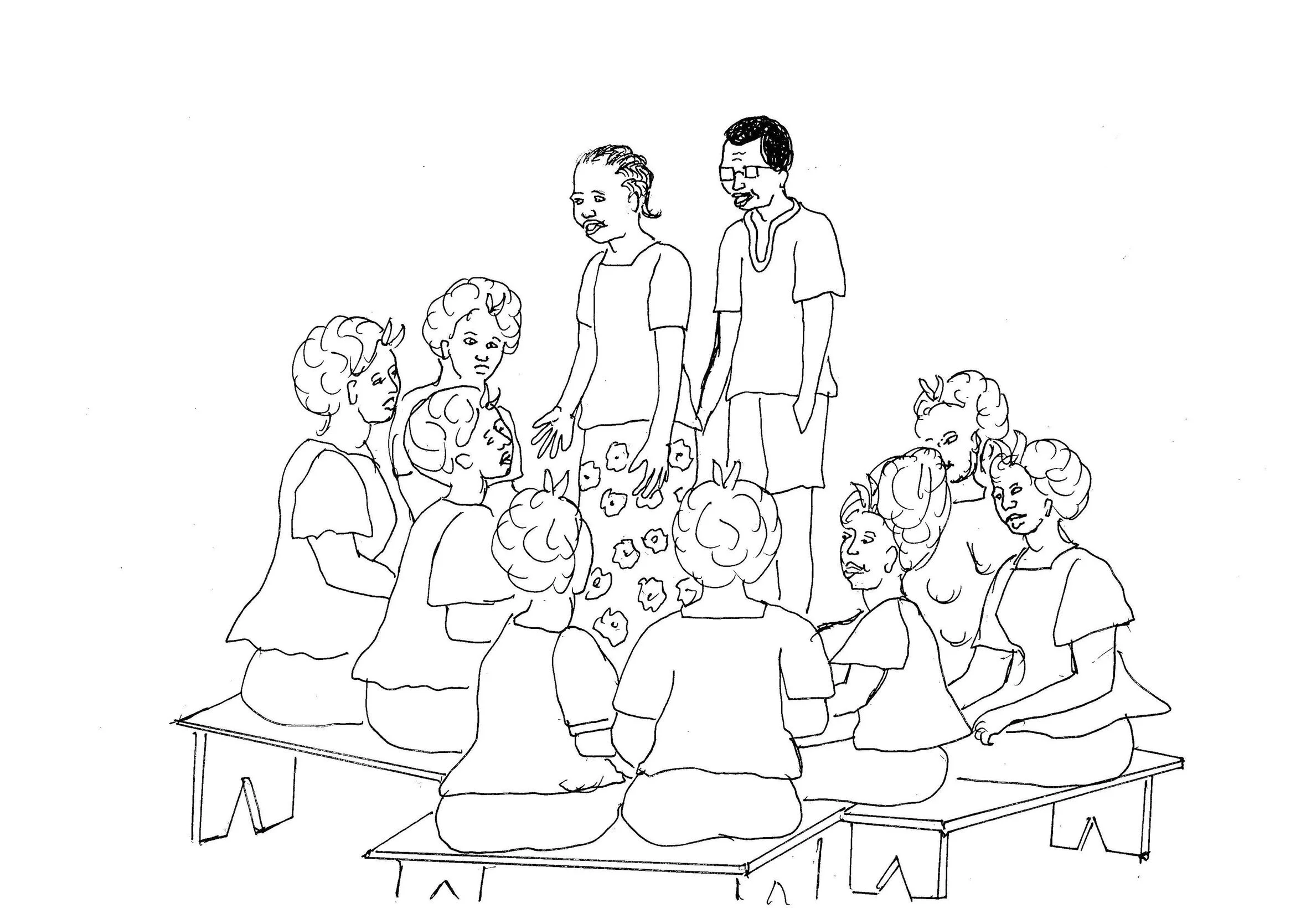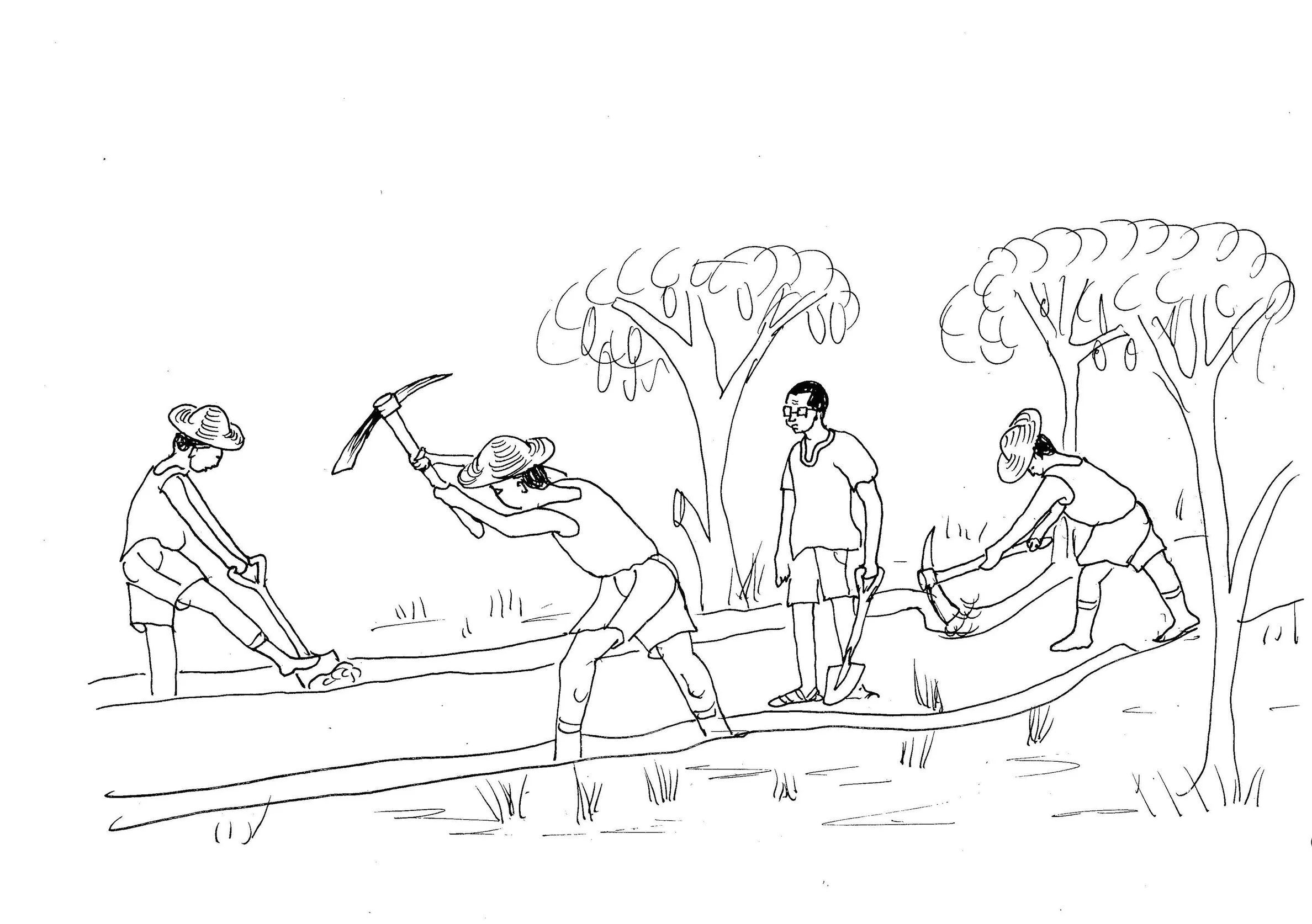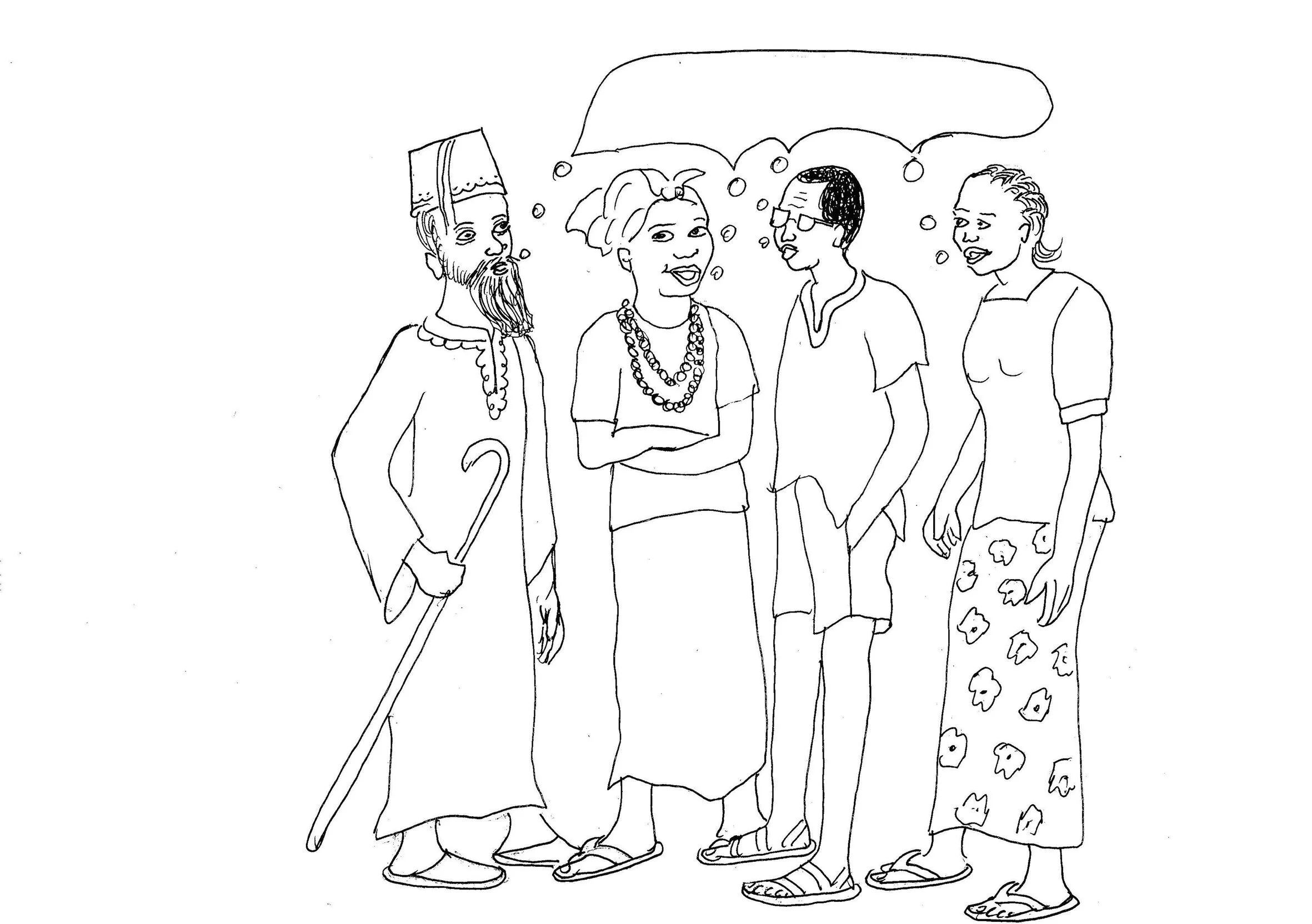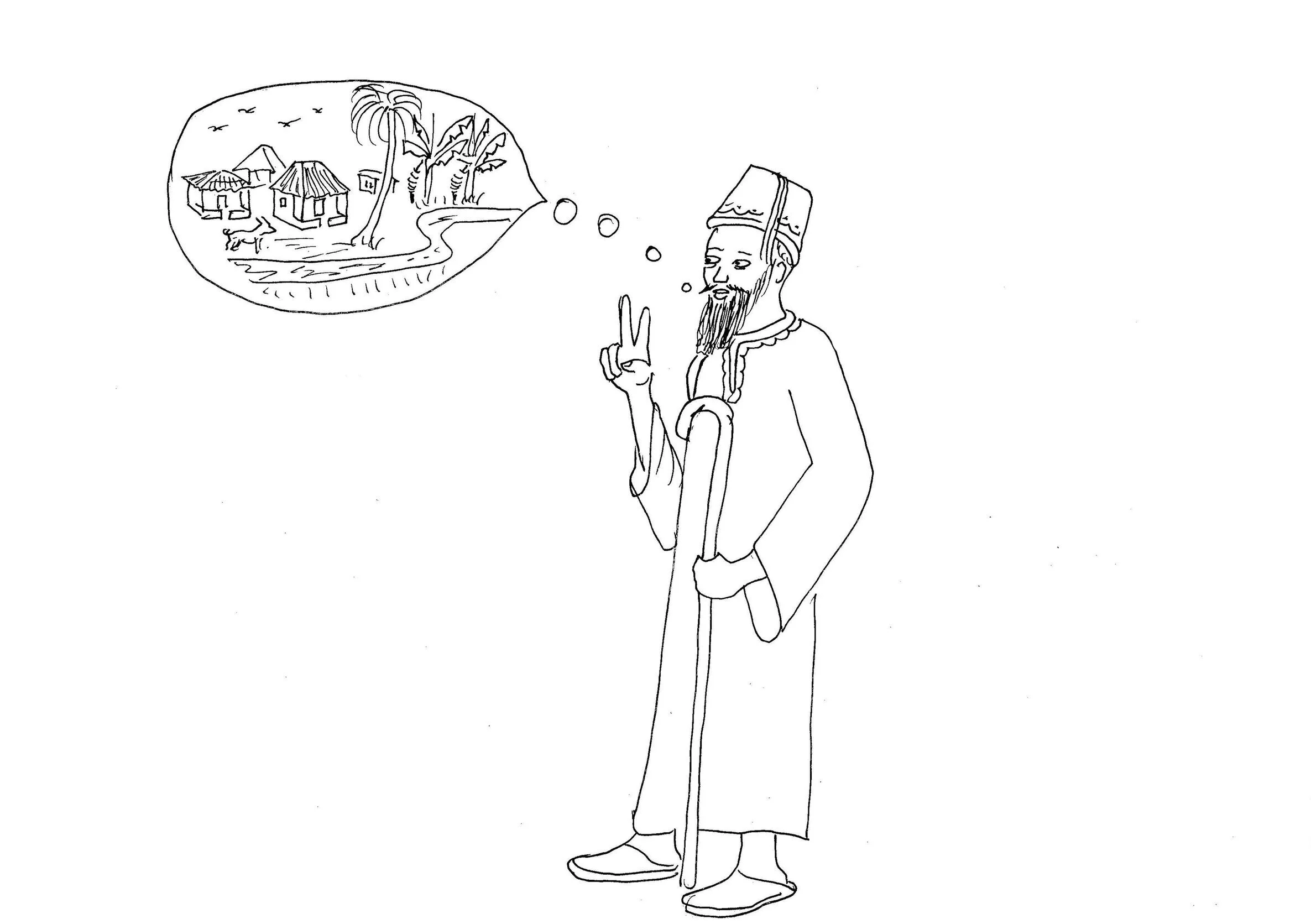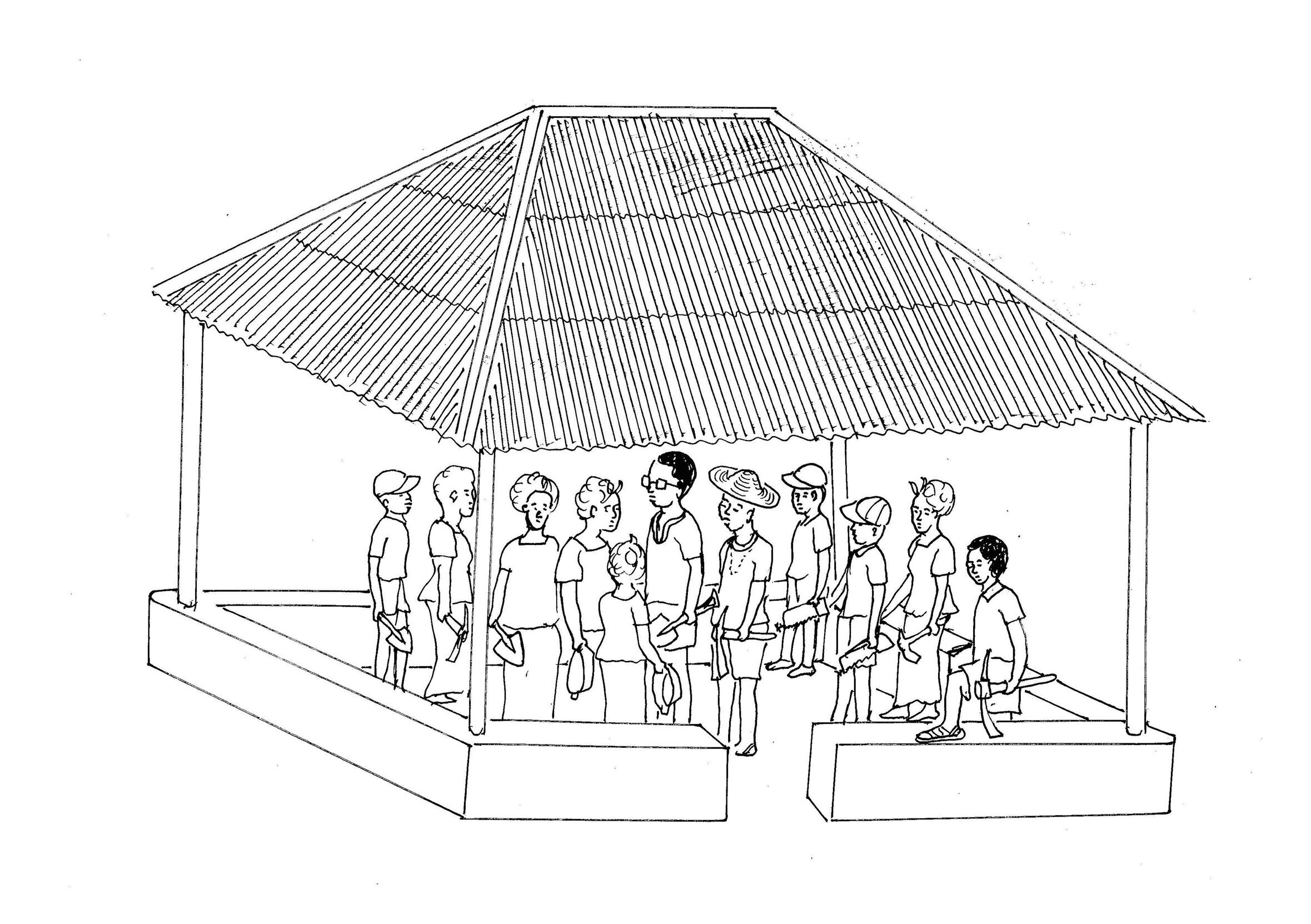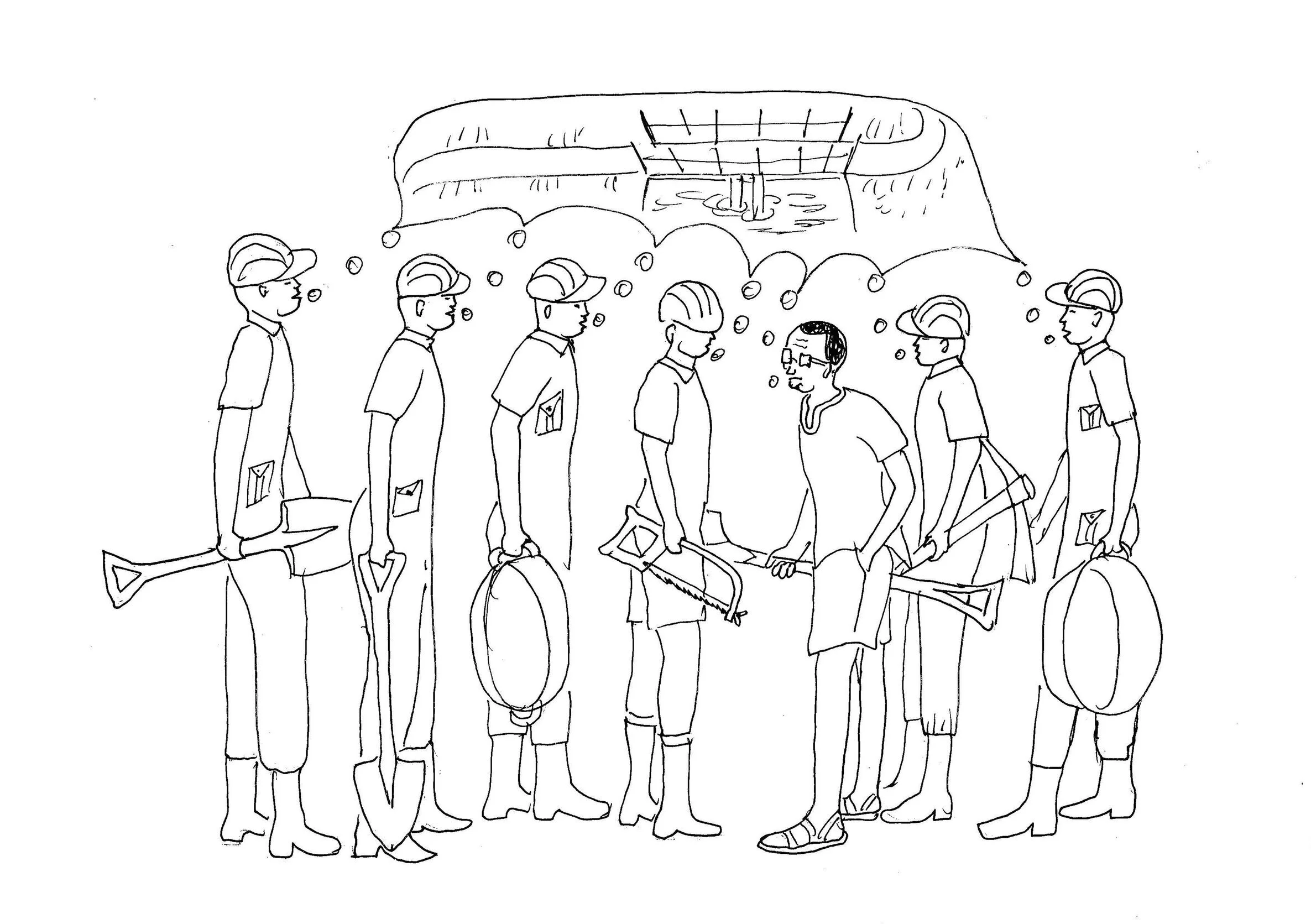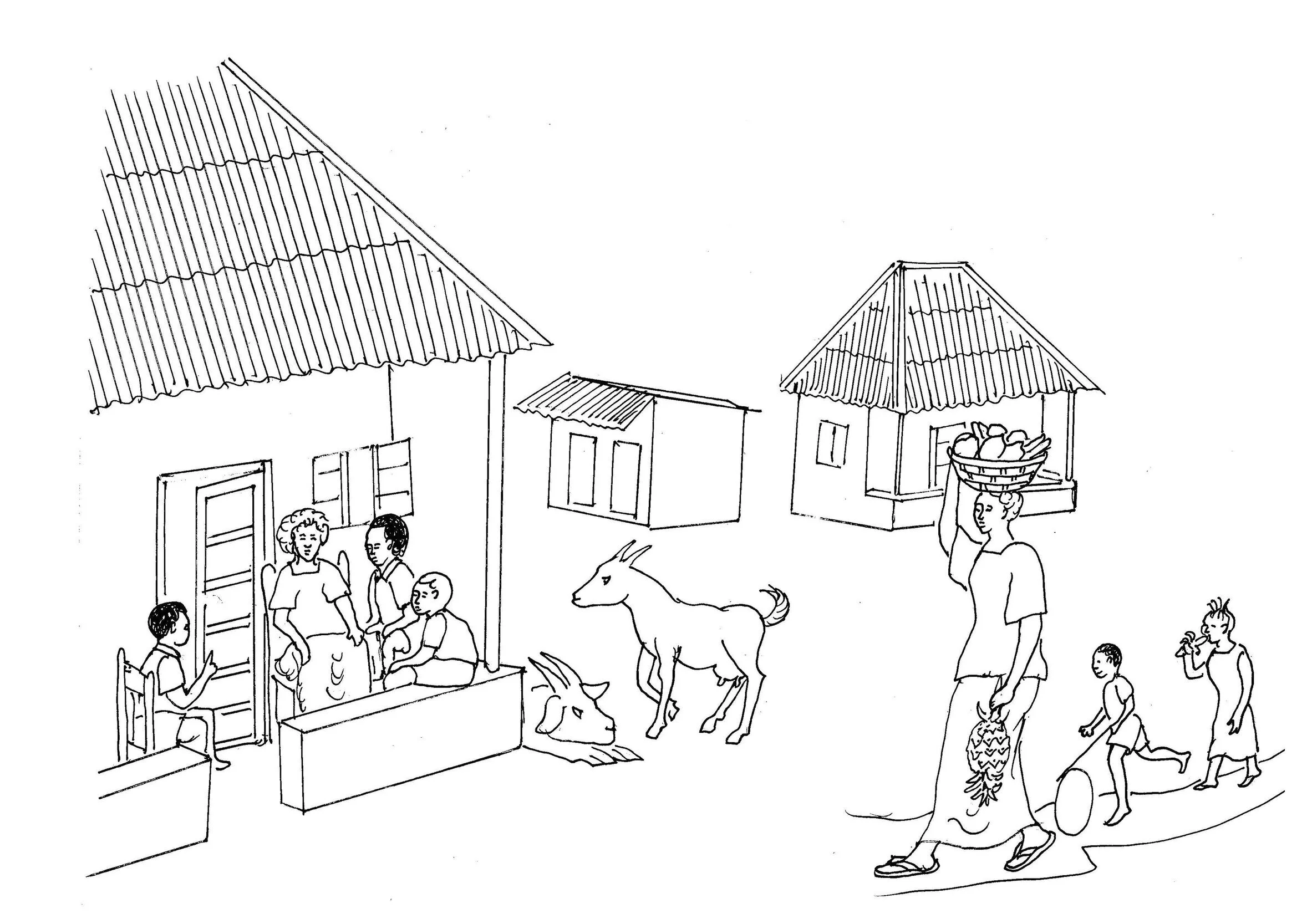Theory of Change: The Story of Mendehun
A Theory of Change is a roadmap that is used to plan programs for social change and evaluate their effectiveness. It is a set of principles that guides programs and activities. OneVillage Partners’ Theory of Change is based on the belief that the development of thriving rural communities requires program activities in four key areas: inclusive leadership, gender equity, social cohesion, and resiliency.
To understand how this might look like in one of our partner villages, we wrote a story about a fictional village, Mendehun. The images in the story are the same images that we use in workbooks and picture cards in activities with program participants.
Chapter 1: The Village
Welcome to the village of Mendehun. Many people are happy here, but everyone knows the challenges the village faces: high levels of disease for young children, limited access to water and sanitation facilities, and low incomes as a result of small agricultural yields.
Here in this village, lives Brima Bockarie. Brima is a carpenter and has never thought of himself as a leader.
This is Brima’s wife, Bintu. Bintu doesn’t have a lot of schooling, but she has a dream to run a small business.
This is Chief Lahai. He remembers when his community could work together on improving their wellbeing, but that was before the civil war.
Chapter 2:
Inclusive Leadership
One day, Brima sees that OneVillage Partners is looking for volunteers to join their program. The people from OneVillage Partners say they want help villagers do their own development work better. Intrigued, Brima asks to be interviewed and is selected to be a member of the Community Action Group along with 11 other men and women. These volunteers will implement development projects in the village.
Community Members Equipped with Leadership Skills
The Community Action Group received training from OneVillage Partners to facilitate community meetings to assess local needs and lead discussions about the village’s vision for improving their quality of life. They discuss in deep detail about the needs in their own community, something they’ve never been asked by an NGO before.
Representative leadership is emergent
Brima begins to see how important it is to bring the voices of many into decision making.
Decision Making at the Community Level is Shared
After a week of consultations, Brima leads his community in identifying the priority need the first project should address. Community members show up in large numbers, and vote to make Water, Sanitation and Hygiene the priority.
Leaders are transparent and accountable
Chief Lahai has come to every one of the consultations that OneVillage Partners has held, and he is inspired by the exuberance and thoughtfulness of the discussions. Chief Lahai pledges his support to the project, and as a testament to this, he announces that he is personally donating cement and zinc roofing to the project. Everyone present that day, nearly a quarter of the village, holds the chief accountable for his words, and the Community Action Group agree to keep the community and the chiefs informed as they complete the project. Everyone is committed to making the project a success.
After some research, the Community Action Group understands that building latrines and holding hygienic education will greatly improve the quality of life in the community. With OneVillage Partners’ support, the Community Action Group designs a latrine prototype and plans the implementation.
A few months of hard work passes and the project is completed. Everyone celebrates their first successful project with OneVillage Partners!
Chapter 3: Gender Equity
Women equipped with life skills and community development tools
After some months, OneVillage Partners introduces the Nurturing Opportunities for Women (NOW) program, where women are trained on how to manage their household finances and use their voice in public. Brima’s wife, Bintu, is chosen to be a NOW participant. In the NOW trainings, Bintu learns valuable skills like how to budget and track finances, despite not having formal education.
Equitable household decision making exists
Bintu’s husband, Brima, takes part in an activity where they learn how to share household decision-making. They make a plan together to share responsibilities in the household.
Women use their voice
Bintu now has a stronger voice in decision making in the household. With her increased confidence, she speaks in public at community meetings.
Women are seen as valuable and equal members of society
When Bintu speaks to the crowd gathered, they are impressed and take note of her suggestions. What is also impressive is how Bintu has reached her financial goal: starting a small business. Other women see this and ask Bintu to teach her the NOW tools.
Chapter 4: Social Cohesion
Social Capital is leveraged and expanded
Brima continues to be involved in development activity in his village. Many of the community groups that came together to implement the project are still united behind the community’s vision of progress. In fact, many of these groups have grown in members and have contributed to different development projects for the village.
Open Communication exists in homes and in the community
OneVillage Partners staff come to the village and present the results of the latrine project –the new latrines have had a dramatic positive impact on the health of the community. Many men and women speak in the meeting, and for many it is their first time using their voice in a community meeting. Chief Lahai speaks about how he has learned that allowing many voices into decision making helps the village better address challenges and unifies the community.
Community and families have shared vision of progress
Chief Lahai closes the meeting by laying out the vision of the Mendehun they want to live in. He tells them that they can only accomplish this vision if they work together.
Networks of collaboration are built and functional
Chief Lahai’s words motivate the community. They meet again in a few weeks to select the next project. It is the largest gathering the community has ever had. Hundreds of community members vote. The groups that have formed to implement the previous project, publicly commit to work together.
Chapter 5: Resiliency
Community strongly connected to existing institutions and resources
For the next project, the community decides to build a bridge that can safely link the residents of Mendehun to their farms across a small river. The Community Action Group knows they will need assistance with engineering, so OneVillage Partners connects them to a trained engineer who will consult with them. Brima and the Community Actions Group budget and plan the implementation of the project based on the blueprint provided by the consultant.
Proactive planning and mobilization meets priority needs
The consulting engineer and OneVillage Partners technical staff help train the local labourers to construct the bridge. With all the experience they have, Brima and the Community Action Group take more of a lead in project managing the bridge construction.
Community members demonstrate capacity to aspire
The Community Action Group members help mobilize the community to provide local materials. Community members are driven by what they accomplished last time and have an even stronger vision of what they can achieve now.
Wellbeing improves
The whole community has seen from the latrine project how they have been able to meet a basic need using assets from within the community. From their experiences, Brima, Bintu, and Chief Lahai all know that the quality of life they have achieved can be sustained and built on in a self-sufficient way for years to come. Mendehun is becoming a thriving and resilient community.





